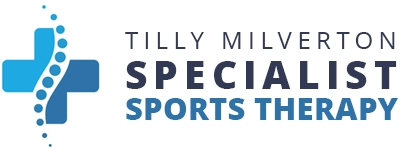If you’ve been told to avoid the knee extension machine after ACL surgery, you’re not alone.
It’s one of the most misunderstood movements in ACL rehab — often banned outright, without context. Patients hear phrases like:
“It’s too much strain on the graft.”
“Just stick to squats for now.”
“That machine’s dangerous after surgery.”
But here’s the reality: most ACL rehab plans include movements that place equal or greater strain on the graft — and we do those without hesitation.
ACL Graft Strain: What the Research Actually Says
Let’s look at the numbers from a well-respected study by Escamilla et al. (2012), published in the Journal of Orthopaedic & Sports Physical Therapy:
| Exercise | ACL Graft Strain |
|---|---|
| Lachman Test | 3.7% |
| Squat with +10kg | 4.0% |
| Single Leg Squat | 3.2% |
| Seated Knee Extension (no load) | 2.8x ACL strain |
Yes — that knee extension movement you’ve been warned about?
It’s actually producing less strain than movements you’re already doing.
So Why Are Knee Extensions Feared?
It’s not the exercise itself — it’s poor timing and poor prescription.
The seated knee extension becomes a problem when introduced too early, especially if:
-
Your knee doesn’t have at least 90° flexion
-
You haven’t rebuilt enough quad control
-
You push aggressively into full extension too soon
This can cause anterior knee pain, irritation, and setbacks — but it’s not the ACL graft that’s at risk. It’s about respecting the stage you’re in and progressing safely.
When Should You Start Knee Extensions After ACL Surgery?
Here’s a safer approach:
-
✅ Wait until you reach at least 90° flexion
-
✅ Start with isometric holds between 60–90° of knee bend
-
✅ Progress gradually into short-range reps
-
✅ Focus on control, not ego
With this approach, the seated knee extension becomes one of the best ways to target inner range quad strength — something many ACL patients struggle to rebuild.
Why Quad Strength Matters in ACL Rehab
Many ACLers reach 12–16 weeks post-op and still say:
“I can’t feel it in my quads.”
“They still look flat.”
“My knee feels unstable.”
That’s often because isolated quad loading — like seated knee extensions — has been skipped or delayed out of fear.
The result? Slower strength gains, poor symmetry, and limited confidence in your knee.
Get the Full Plan: Safe, Phase-Based ACL Rehab
If you’re going through ACL rehab and feeling lost, underloaded, or confused by conflicting advice…
📘 My Complete ACL Recovery Guide gives you:
✅ Weekly rehab plans from week 1 post-op
✅ Phase-by-phase progressions
✅ Strength testing benchmarks
✅ Guidance on when to introduce exercises like knee extensions — and how
It’s used by both patients and therapists across the world.
Don’t keep guessing what’s safe or effective.
👉 Click here to grab your copy
Final Thoughts
Knee extensions aren’t the enemy — poor timing and a lack of proper guidance are.
When used correctly, they’re one of the most powerful tools for rebuilding quad strength after ACL surgery.
Want a rehab plan that actually makes sense?
👉 Get the Complete ACL Recovery Guide here
Written by:
Tilly Milverton – ACL Rehab Specialist
Instagram: @specialistsportstherapy
